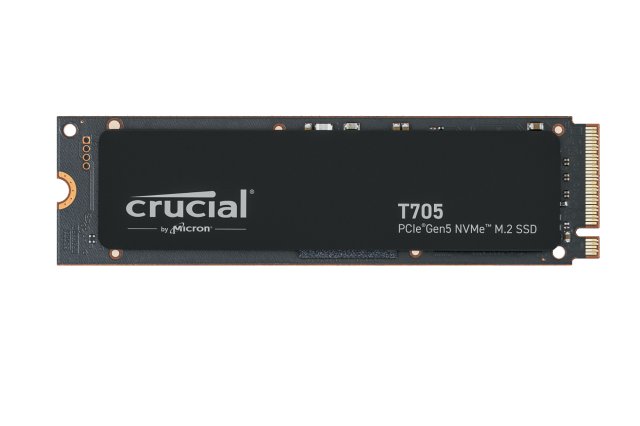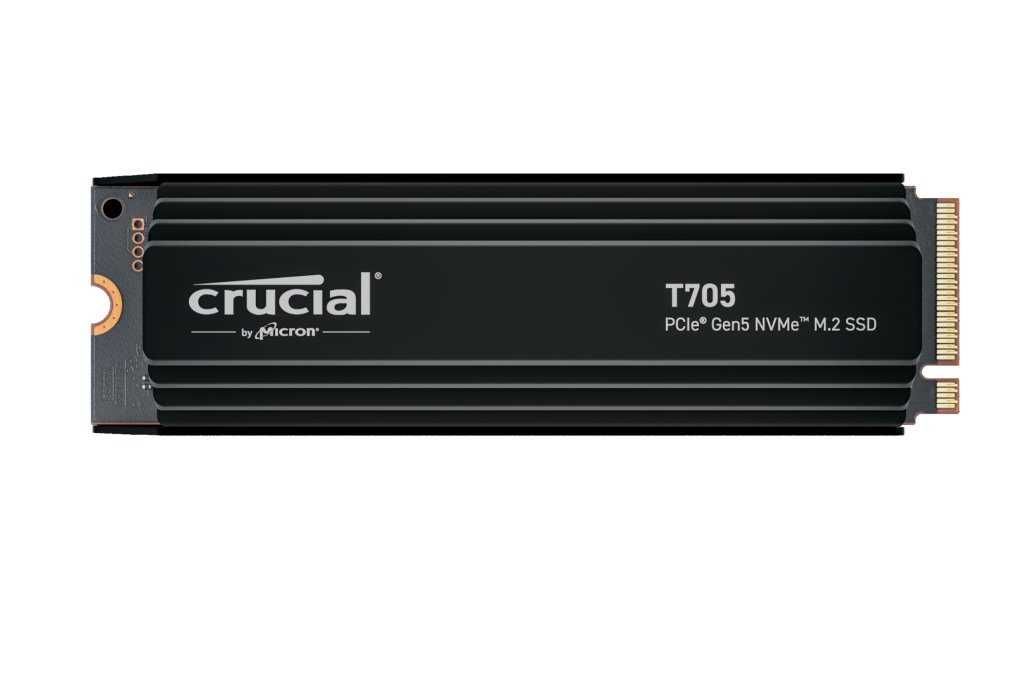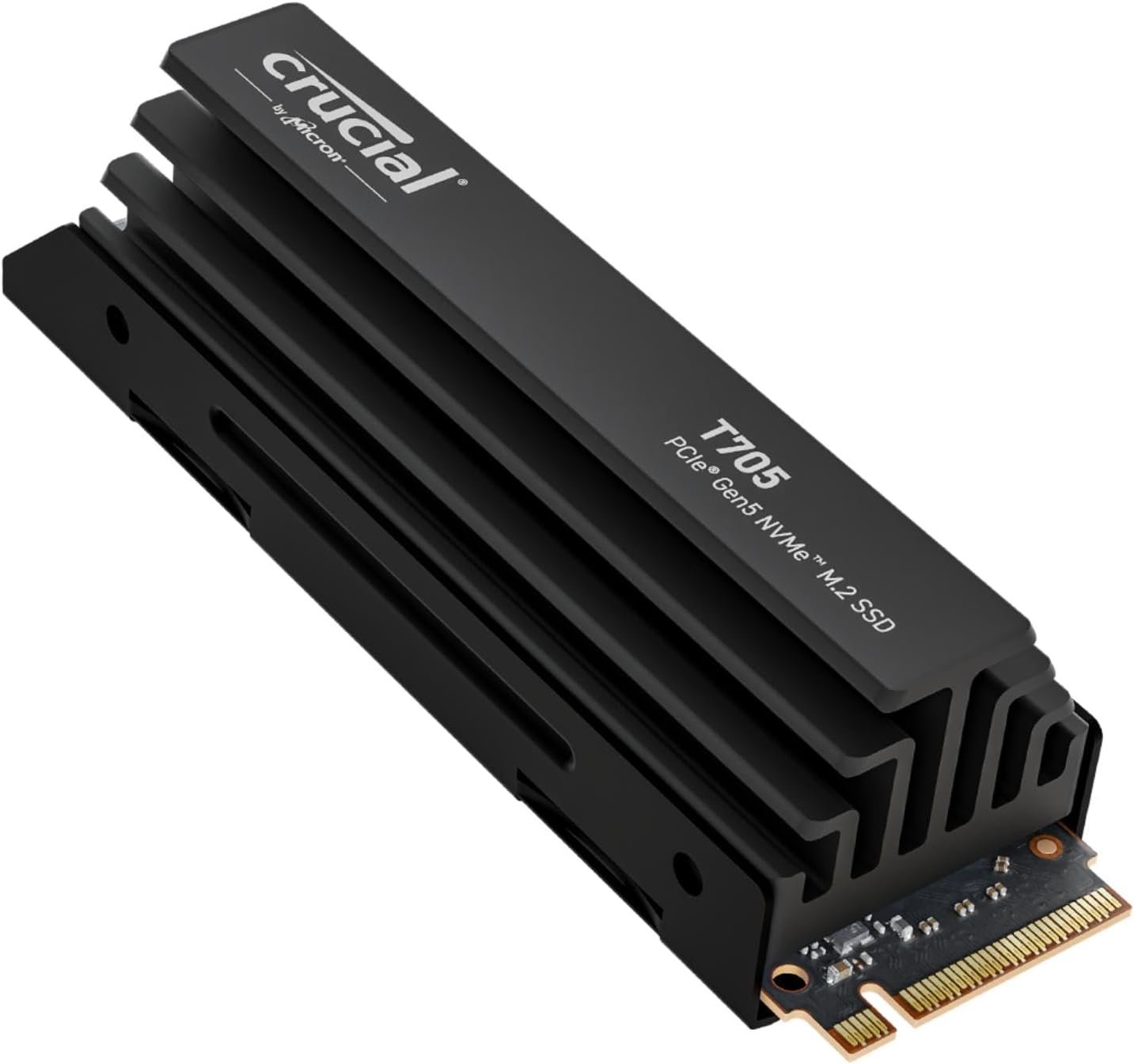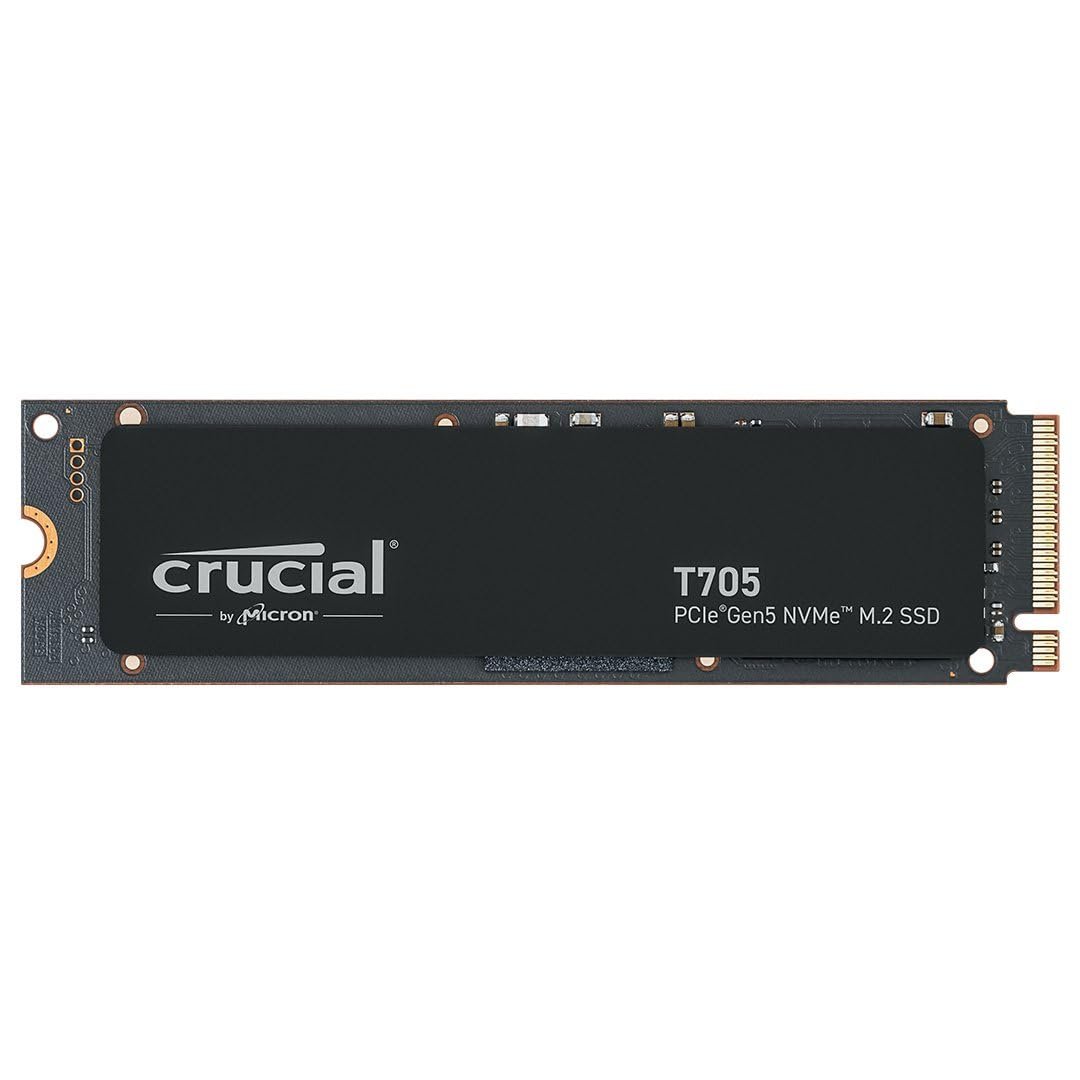The relentless march of storage technology has reached a new peak, pushing the boundaries of what we thought possible just a year ago. Crucial’s T705 Gen 5 SSD arrives as a testament to this progress, offering staggering speeds that promise to redefine workflows for professionals and enthusiasts alike. It represents the bleeding edge, a component built not just for today’s needs, but for the demanding applications of tomorrow.
The Crucial T705 isn’t just fast; it’s a paradigm shift in consumer storage performance. Built on the foundation of the Phison E26 controller and Micron’s 232-layer TLC NAND, this drive shatters previous records. With sequential read speeds reaching up to 14,500 MB/s and writes hitting 12,700 MB/s on the 2TB model, it nearly doubles the throughput of the fastest PCIe Gen 4 drives. In practical terms, this means massive file transfers, like a 100GB video project, can complete in seconds rather than minutes. While boot times and everyday application loading might not feel dramatically different from a high-end Gen 4 SSD, the T705’s prowess becomes undeniable when handling truly demanding, I/O-intensive workloads.

Such blistering speed generates considerable heat, a physical reality Crucial has addressed with a well-engineered, non-RGB heatsink. The optional cooler is a handsome, dark gray unit made of anodized aluminum and a nickel-plated copper core that effectively wicks heat away from the controller and NAND chips. It’s a functional and aesthetically pleasing design that feels substantial and premium. For those with capable motherboard M.2 cooling solutions, a version without the heatsink is available. However, make no mistake: powerful cooling is not optional. Without it, the drive will inevitably thermal throttle under sustained load, erasing the very performance advantage you paid for.
Beyond raw speed, the T705 is equipped with features aimed at the future. Its support for Microsoft’s DirectStorage API is a key selling point for gamers, promising to one day enable near-instantaneous asset loading by allowing the GPU to pull data directly from the SSD. While the ecosystem for DirectStorage is still developing, owning a T705 is a form of future-proofing. The drive also boasts strong endurance ratings (up to 2400 TBW for the 4TB model) and a solid five-year warranty, providing a degree of security for your investment.
This brings us to the crucial question of value. The T705 commands a significant price premium over its Gen 4 counterparts, and it requires a modern motherboard (and CPU) to even enable its Gen 5 capabilities. For the average user or even the dedicated gamer, the real-world performance gains in most current applications are difficult to justify over a top-tier Gen 4 drive, which offers fantastic performance for a much lower cost. The T705 is an enthusiast-grade product in the truest sense. Its value proposition is clearest for professionals working with massive 8K video files, complex 3D rendering, or large-scale data analysis, where every second saved on a transfer or render directly translates into productivity and money.

The Crucial T705 is a phenomenal piece of hardware that unequivocally claims the performance crown. It’s an engineering marvel that offers a glimpse into the future of storage. This drive is the ideal choice for professionals with uncompromising workflow demands and for enthusiasts building a “cost-is-no-object” system who want the absolute fastest components available today. For everyone else, it remains a luxury item—an aspirational product to watch as the Gen 5 ecosystem matures and prices inevitably fall.

Where to Buy:
https://www.amazon.com/s?k=Crucial+T705+Gen+5+NVMe+SSD&tag=cp01a-20

Crucial T705 Gen 5 NVMe SSD Quick Summary
Key Scores:
-
Value:
75% -
Design:
85% -
Performance:
98% -
Quality:
92% -
Popularity:
70%
Top Pros
- ✅ Sequential transfer speeds set a new benchmark for consumer SSDs.
- ✅ The optional premium heatsink effectively manages intense thermal output.
- ✅ Strong endurance ratings provide peace of mind for heavy workloads.
- …
Key Cons
- ❌ Extreme performance comes with a correspondingly high price point.
- ❌ Real-world benefits over top-tier Gen 4 drives are minimal for most users.
- ❌ Requires a modern platform and robust cooling to perform optimally.
















